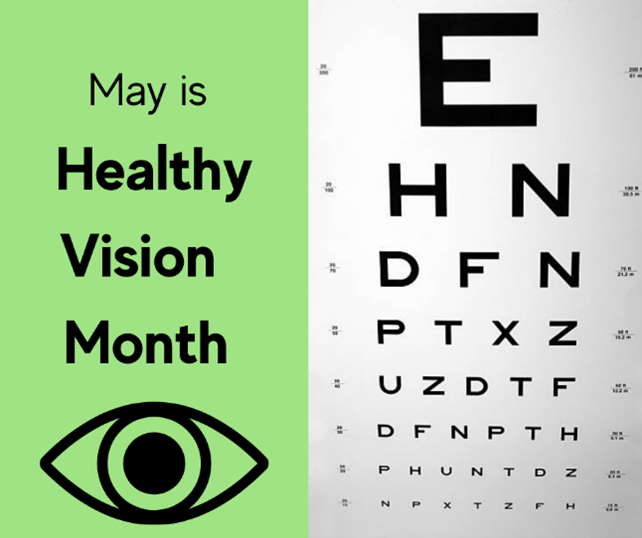Home » Blog » Tips for Healthy Vision Month
Tips for Healthy Vision Month
Posted by: The Eye Center of North Florida in News & Community, May 3, 2021

Diet and lifestyle choices can directly affect your eyes. The best way to take care of your eyes during May’s Healthy Vision Month and year-round is to look after your overall health and schedule your eye exams as a priority. Exercising, eating healthy, and drop the habit of smoking are three of the best investments you can make in your vision.
Making healthy choices and getting regular eye exams can help reduce the risk of getting some eye diseases. Also, healthy options can minimize vision loss or slow down the disease if you have age-related macular degeneration, cataracts, diabetic retinopathy, or glaucoma.
Celebrating Healthy Vision Month, encourages you to find ways to be healthier, so your vision will last a lifetime. One aspect of a healthy lifestyle is eating the right foods. A diet low in fat and rich in fruits, vegetables, and whole grains can pay benefits not only to your overall health but for your eyes as well.
Here are four fantastic foods recommended by the American Academy of Ophthalmology to include in your diet and keep your eyes healthy.
Kale. Leafy green vegetables, like kale, are high in lutein and zeaxanthin, two nutrients found in the healthy eye that are believed to lower your risk for age-related macular degeneration (AMD) and cataracts. One large study showed that women who had diets high in lutein were 23 percent less likely to develop cataracts than women whose diets were low in this nutrient. Not a big fan of kale? Not to worry. Other dark leafy green vegetables, like spinach, romaine lettuce, collards, and turnip greens, also contain significant amounts of lutein and zeaxanthin. Eggs are also a good source of these nutrients, as are broccoli, peas, and corn.
Salmon. Some studies suggest that diets rich in omega-3 fatty acids from cold-water fish like salmon, tuna, sardines, and halibut reduce the risk of developing eye disease later in life. A 2010 study from Johns Hopkins found that people who had a diet high in omega-3 fatty acid were much less likely to develop AMD.
Oranges. Oranges and all of their citrus families, such as grapefruit, tangerines, and lemons, are high in vitamin C, an antioxidant that is critical to eye health. Scientists have found that your eyes need relatively high levels of vitamin C to function properly, and antioxidants can prevent or at least delay cataracts and AMD. Many other foods offer benefits similar to oranges, including peaches, red peppers, tomatoes, and strawberries.
Black-eyed peas. Legumes of all kinds, including black-eyed peas, kidney beans, lima beans, and peanuts, contain zinc, an essential trace mineral that is found in high concentration in the eyes. Zinc may help protect your eyes from the damaging effects of light. Other foods high in zinc include oysters, lean red meat, poultry, and fortified cereals.
Most people think of the one vegetable as a great food choice to keep your eyes healthy are carrots. Carrots are high in beta-carotene, a nutrient that helps with night vision. There are other orange-colored fruits and vegetables to add to your plate, like sweet potatoes, apricots, and cantaloupe.
Keep your diet colorful, which will help keep your eyes healthy.
Is it time to schedule a comprehensive eye exam? Call TODAY to schedule your appointment!
850-784-3937

References: American Academy Ophthalmology
